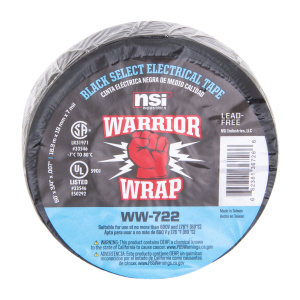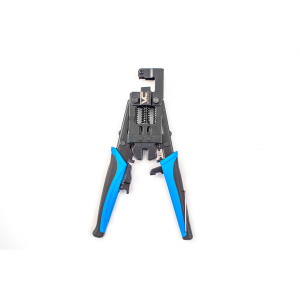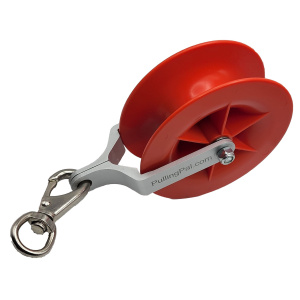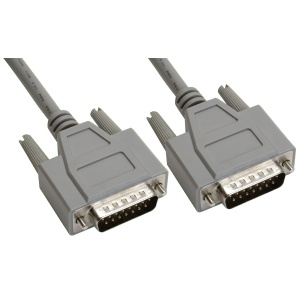If you are looking for portable cords for your electrical needs, you might have come across different types of portable cord styles like SOOW, SEOOW, STOW, and their junior versions. These types of cords differ from each other in terms of their construction, ratings, and applications. In this article, we will discuss the differences between these portable cord styles, their features, and their applications.
Table of Contents
- Introduction
- What are Portable Cord Styles?
- SOOW Portable Cord Style
- Construction
- Ratings
- Applications
- SEOOW Portable Cord Style
- Construction
- Ratings
- Applications
- STOW Portable Cord Style
- Construction
- Ratings
- Applications
- Junior Portable Cord Styles
- SJOW
- SJOOW
- SJTW
- SJTOW
- SJEOOW
- SJTOW-A
- Comparison Table
- Conclusion
- FAQs
Introduction
Portable cords are flexible, durable, and highly versatile cables that can be used for a wide range of electrical applications, including power tools, portable machinery, generators, and temporary power installations. They are designed to withstand harsh environments, abrasion, and exposure to oils, chemicals, and extreme temperatures.
Different portable cord styles are designed to meet different requirements and specifications, depending on the application, voltage, and temperature rating. In this article, we will focus on three of the most popular portable cord styles, namely SOOW, SEOOW, and STOW, and their junior versions.
What are Portable Cord Styles?
Portable cord styles refer to the construction and design of a portable cord. They are identified by a series of letters and numbers that represent the features and characteristics of the cord, such as its voltage rating, temperature rating, number of conductors, and jacket material.
SOOW Portable Cord Style
Construction
SOOW stands for S – Service Cord, OO – Oil-resistant insulation and jacket, W – Weather and Water-resistant. This type of cord is constructed with stranded bare copper conductors, EPDM insulation, a CPE jacket, and a fillers separator.
Ratings
SOOW cords are rated for 600 volts, 90 degrees Celsius, and are oil, water, and weather-resistant.
Applications
SOOW cords are commonly used in applications where flexibility, durability, and resistance to oil, water, and weather are essential, such as portable tools, motors, and machinery.
SEOOW Portable Cord Style
Construction
SEOOW stands for S – Service Cord, E – Thermoset Elastomer insulation, OO – Oil-resistant insulation and jacket, W – Weather and Water-resistant. This type of cord is constructed with stranded bare copper conductors, an ethylene propylene rubber (EPR) insulation, a CPE jacket, and a fillers separator.
Ratings
SEOOW cords are rated for 600 volts, 105 degrees Celsius, and are oil, water, and weather-resistant.
Applications
SEOOW cords are commonly used in applications where flexibility, durability, and resistance to oil, water, and weather are essential, such as portable tools, motors, and machinery, as well as in marine and mining industries.
STOW Portable Cord Style
Construction
STOW stands for S – Service Cord, T – Thermoplastic insulation, O – Oil-resistant jacket, W – Weather and Water-resistant. This type of cord is constructed with stranded bare copper conductors, a thermoplastic elastomer (TPE) insulation, a thermoplastic elastomer (TPE) jacket, and a fillers separator.
Ratings
STOW cords are rated for 600 volts, 90 degrees Celsius, and are oil, water, and weather-resistant.
Applications
STOW cords are commonly used in applications where flexibility, durability, and resistance to oil, water, and weather are essential, such as construction sites, industrial equipment, and portable power tools.
Junior Portable Cord Styles
In addition to SOOW, SEOOW, and STOW, there are also several junior versions of portable cord styles that are commonly used in various applications. Here are some of the most popular junior portable cord styles:
SJOW
SJOW stands for S – Junior Service Cord, J – Junior thermoplastic insulation, O – Oil-resistant jacket, W – Weather and Water-resistant. This type of cord is constructed with stranded bare copper conductors, a thermoplastic elastomer (TPE) insulation, a thermoplastic elastomer (TPE) jacket, and a fillers separator. SJOW cords are rated for 300 volts, 60 degrees Celsius, and are oil, water, and weather-resistant.
SJOOW
SJOOW stands for S – Junior Service Cord, J – Junior thermoplastic insulation, OO – Oil-resistant insulation and jacket, W – Weather and Water-resistant. This type of cord is constructed with stranded bare copper conductors, a thermoplastic elastomer (TPE) insulation, a thermoplastic elastomer (TPE) jacket, and a fillers separator. SJOOW cords are rated for 300 volts, 60 degrees Celsius, and are oil, water, and weather-resistant.
SJTW
SJTW stands for S – Junior Service Cord, J – Junior thermoplastic insulation, T – Thermoplastic jacket, W – Weather and Water-resistant. This type of cord is constructed with stranded bare copper conductors, a thermoplastic elastomer (TPE) insulation, a thermoplastic jacket, and a fillers separator. SJTW cords are rated for 300 volts, 60 degrees Celsius, and are weather and water-resistant.
SJTOW
SJTOW stands for S – Junior Service Cord, J – Junior thermoplastic insulation, T – Thermoplastic jacket, O – Oil-resistant jacket, W – Weather and Water-resistant. This type of cord is constructed with stranded bare copper conductors, a thermoplastic elastomer (TPE) insulation, a thermoplastic jacket, a CPE oil-resistant jacket, and a fillers separator. SJTOW cords are rated for 300 volts, 60 degrees Celsius, and are oil, water, and weather-resistant.
SJEOOW
SJEOOW stands for S – Junior Service Cord, J – Junior thermoset elastomer insulation, OO – Oil-resistant insulation and jacket, W – Weather and Water-resistant. This type of cord is constructed with stranded bare copper conductors, an ethylene propylene rubber (EPR) insulation, a CPE jacket, and a fillers separator. SJEOOW cords are rated for 300 volts, 90 degrees Celsius, and are oil, water, and weather-resistant.
SJTOW-A
SJTOW-A stands for S – Junior Service Cord, J – Junior thermoplastic insulation, T – Thermoplastic jacket, O – Oil-resistant jacket, W – Weather and Water-resistant, -40°C to 90°C temperature rating. This type of cord is constructed with stranded bare copper conductors, a thermoplastic elastomer (TPE) insulation, a thermoplastic jacket, a CPE oil-resistant jacket, and a fillers separator. SJTOW-A cords are rated for 300 volts and are commonly used in outdoor applications, such as portable lighting, sound systems, and communication equipment.
Comparison Table
Here’s a comparison table summarizing the differences between the different portable cord styles:
| Cord Style | Construction | Ratings | Applications |
|---|---|---|---|
| SOOW | Stranded bare copper conductors, EPDM insulation, CPE jacket, fillers separator | 600V, 90°C, oil, water, and weather-resistant | Portable tools, motors, machinery |
| SEOOW | Stranded bare copper conductors, EPR insulation, CPE jacket, fillers separator | 600V, 105°C, oil, water, and weather-resistant | Portable tools, motors, machinery, marine, and mining industries |
| STOW | Stranded bare copper conductors, TPE insulation, TPE jacket, fillers separator | 600V, 90°C, oil, water, and weather-resistant | Construction sites, industrial equipment, portable power tools |
| SJOW | Stranded bare copper conductors, TPE insulation, TPE jacket, fillers separator | 300V, 60°C, oil, water, and weather-resistant | Light-duty applications |
| SJOOW | Stranded bare copper conductors, TPE insulation, TPE jacket, fillers separator | 300V, 60°C, oil, water, and weather-resistant | Light-duty applications |
| SJTW | Stranded bare copper conductors, TPE insulation, thermoplastic jacket, fillers separator | 300V, 60°C, weather, and water-resistant | Light-duty applications |
| SJTOW | Stranded bare copper conductors, TPE insulation, thermoplastic jacket, CPE oil-resistant jacket, fillers separator | 300V, 60°C, oil, water, and weather-resistant | Light-duty applications |
| SJEOOW | Stranded bare copper conductors, EPR insulation, CPE jacket, fillers separator | 300V, 90°C, oil, water, and weather-resistant | Light-duty applications |
| SJTOW-A | Stranded bare copper conductors, TPE insulation, thermoplastic jacket, CPE oil-resistant jacket, fillers separator | 300V, -40°C to 90°C, weather, and water-resistant | Outdoor applications |
Conclusion
Choosing the right portable cord style can be crucial in ensuring safety, reliability, and performance for your electrical applications. By understanding the differences between SOOW, SEOOW, STOW, and their junior versions, you can make an informed decision on which cord style to use for your specific needs.
FAQs
- What does the “S” in portable cord styles stand for?
- The “S” stands for “Service Cord”.
- What is the maximum voltage rating for portable cords?
- The maximum voltage rating for portable cords is 600 volts.
- Can I use SJTOW-A cords for indoor applications?
- Yes, SJTOW-A cords can be used for indoor applications, but they are more commonly used for outdoor applications.
- What is the temperature rating for SJEOOW cords?
- The temperature rating for SJEOOW cords is 90 degrees Celsius.
- Are portable cords suitable for permanent installations?
- No, portable cords are not suitable for permanent installations as they are designed for temporary use and are not intended to be used as a substitute for building wire.












